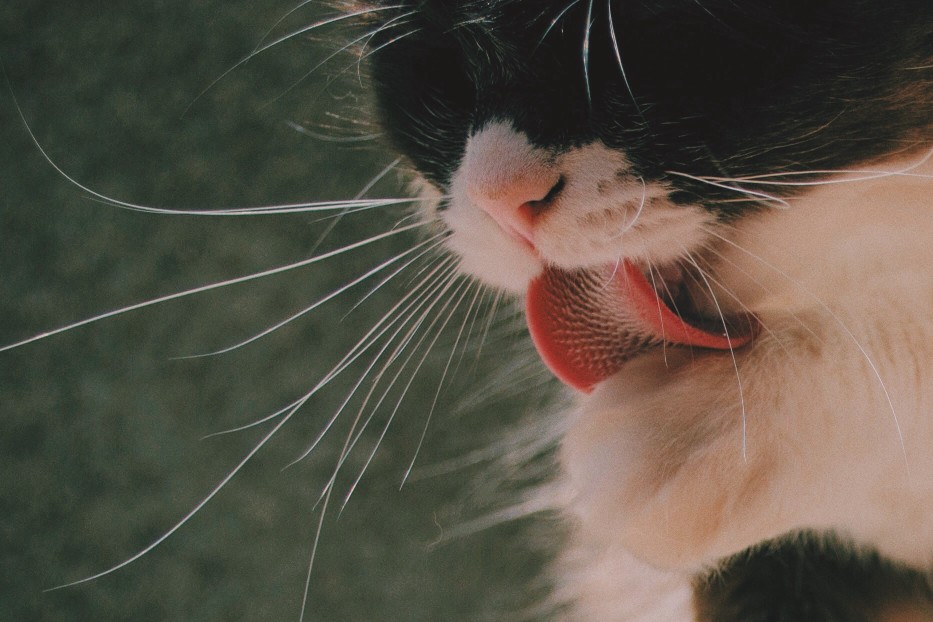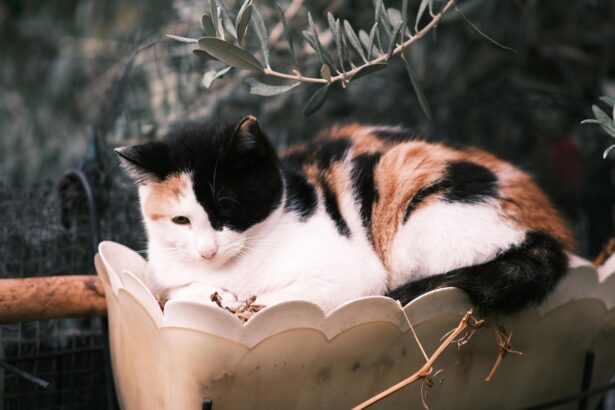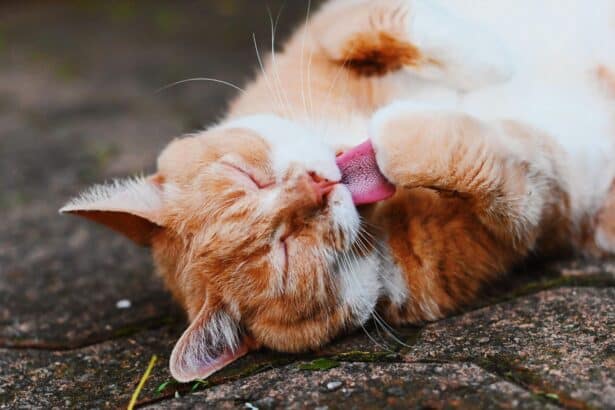Why cats learned to meow at us
Here’s a little secret between cat moms: adult cats mostly meow for humans, not for other cats. With each sound, your feline has learned to get your attention, your snacks, or your snuggles.
Kittens mew for their mothers, of course, but as they grow, they switch to body language with other cats and keep the meow just for us. Flattering, right?
Meows vs. body talk
Cats chat with their whole body: the tail, ears, whiskers, even the pupils. They’ll meow to you, but they’ll tell the full story with posture and tail signals.
If you want to decode the rest of the message, brush up on tail language with this handy guide: why cats wag their tails.
The many meanings of a meow
“Feed me” meows
Hunger meows are repetitive, insistent, sometimes paired with ankle rubs and kitchen patrols. They may add a sharp, urgent tone right before mealtime.
Try scheduled feeding and keep mealtimes consistent. A small puzzle feeder can shift your cat’s mindset from “demand mode” to “hunt mode.”
“Notice me” meows
Attention-seeking meows are softer, more musical, and often come with slow blinks, head boops, or a dainty sit right in your laptop’s warmest spot.
Offer short bursts of interactive play (2–3 minutes) several times a day. For cuddly souls, quiet petting and a cozy blanket do wonders.
“I’m not okay” meows
Stress or discomfort meows sound sharper or louder and can come with pacing, hiding, or wide pupils. Some seniors develop new nighttime vocalizations as their routines or senses change.
Watch for sudden changes, litter box struggles, or excessive vocalizing. When in doubt, call your vet.
If the soundtrack gets louder after dark, these insights can help: why cats meow at night.
What to do, meow by meow
When it’s hunger
- Offer several small meals rather than one big one.
- Use a slow feeder or scatter feeding to mimic hunting.
- Keep a steady schedule so your cat knows what to expect.
Common mistake to avoid: feeding the instant your cat meows. It teaches that meowing is the vending machine button and often makes it worse. Wait for a calm moment, then serve.
Curious about what should be in the bowl? Here’s a clear, practical read on what cats should really eat.
When it’s attention
- Build a “meow-neutral” routine: greet, play, and cuddle on a schedule.
- Reward quiet, calm moments with affection or a treat.
- Short, daily play sessions (wand toy, feather, or a crinkly ball) burn energy and reduce vocal requests.
Practical tip: teach a silent “hello.” When you enter a room, show an open hand and wait for a head boop before petting. Many cats learn to greet quietly because calm gets them cuddles faster.
When it’s stress
- Create a safe zone with a cozy bed, water, litter, and a high perch.
- Use predictable routines during changes (new baby, move, guests).
- Offer scent comfort: a worn T-shirt you’ve slept in can be magically soothing.
And remember, relaxation often shows as a soft face and a gentle rumbling. If you love the sound of calm, explore why cats purr.
When it might be medical
Call your vet if the meowing is sudden, intense, or paired with signs like weight change, excessive thirst, confusion, or litter box trouble. Pain, hyperthyroidism, dental issues, or cognitive changes can all raise the volume.
Keep a simple diary for a few days: time, context, and what helped. It’s a huge help for your vet.
Surprising tidbits and quick wins
- Fun fact: many cats weave a high-pitched “cry” into their purr—a sound that humans find impossible to ignore. It’s their velvet-gloved demand.
- Quick reset: if your cat is meowing at the door, toss three tiny treats across the room to redirect, then start a 2-minute play session. Movement dissolves the ask.
- Skip this: scolding a meowing cat. It adds stress and often amplifies the noise. Teach what to do instead: calm sitting earns attention, meowing doesn’t.
The meow is a love language
Your cat’s meow is personal—shaped by your routines, her personality, and your shared everyday magic. With a bit of decoding, you’ll answer the right need every time.
Listen, play, cuddle, repeat. It’s the sweetest conversation of the day.
FAQ
Why does my cat meow constantly?
Common reasons include hunger, boredom, stress, or medical discomfort. Start with routine and play, then check the litter, water, and food. If it’s sudden or intense, contact your vet.
Why does my cat meow before using the litter box?
Some announce their plans, while others signal discomfort. If you see straining, small clumps, or frequent trips, call your vet and ensure the box is clean, large, and easily accessible.
How can I stop meowing at night?
Schedule a solid play session and a small meal before bedtime. Avoid feeding during the night. For more ideas, see our guide on cats meowing at night.
Do cats understand words or just tone?
They recognize patterns, tones, and certain words tied to routines. Clear cues, consistent timing, and calm voices help your cat understand exactly what you mean.






